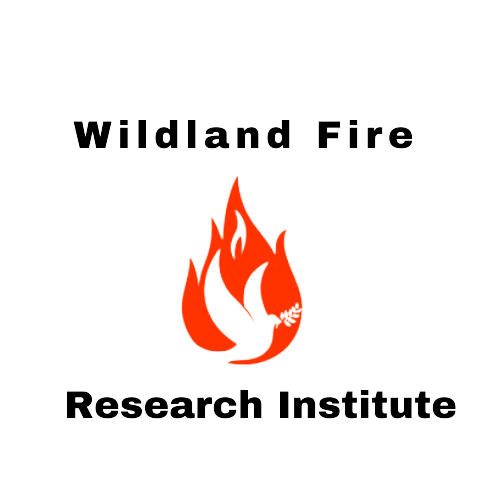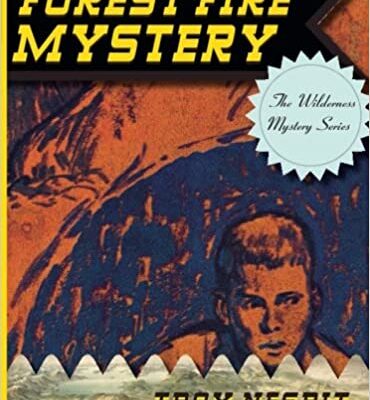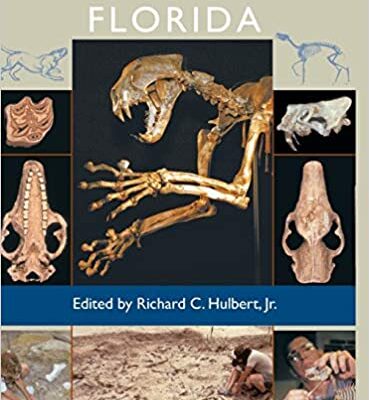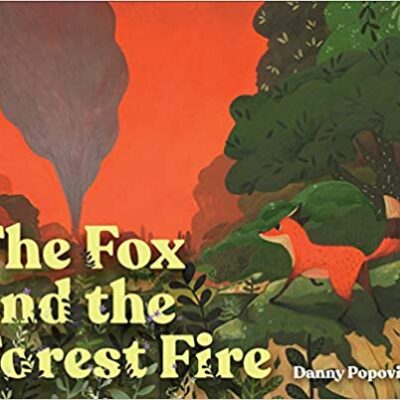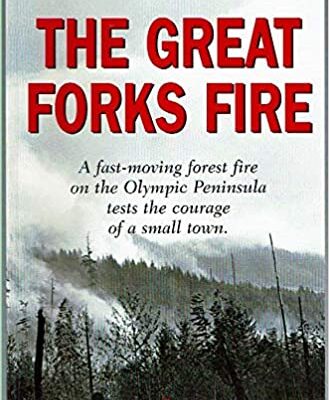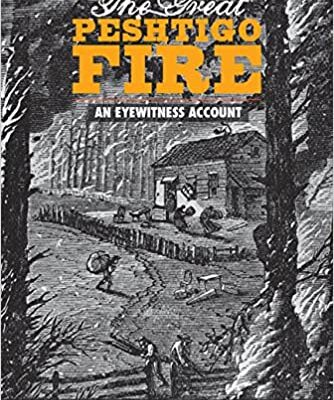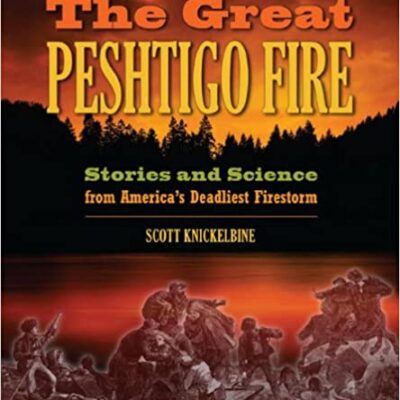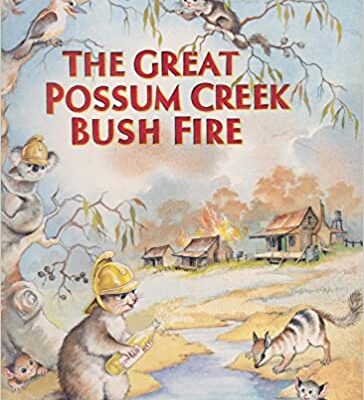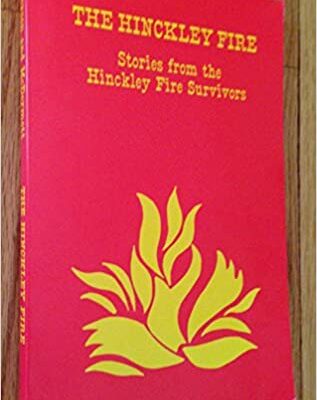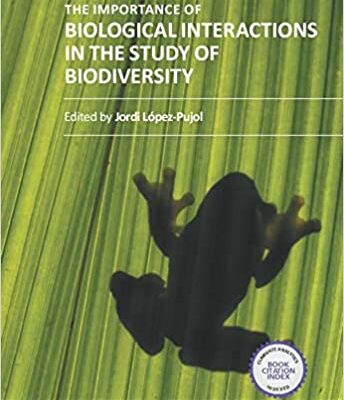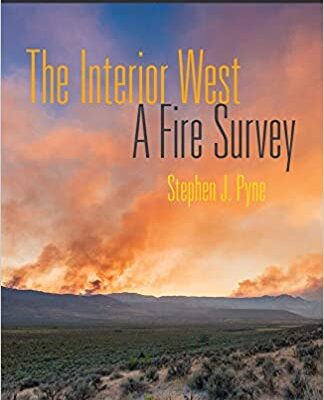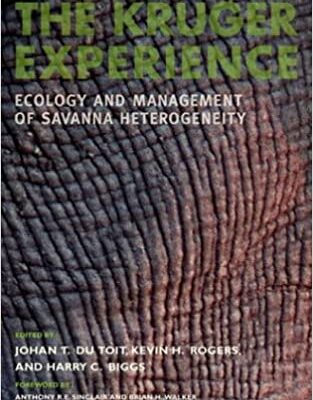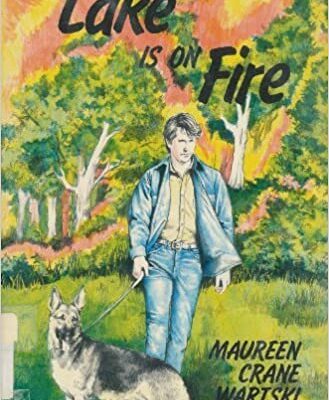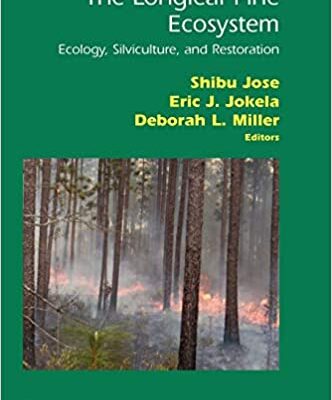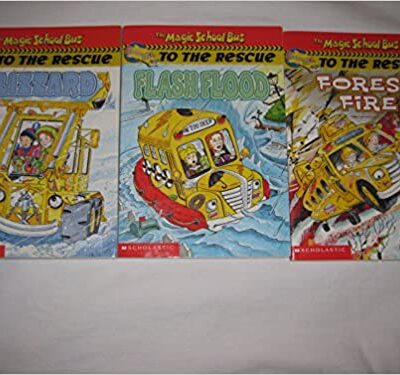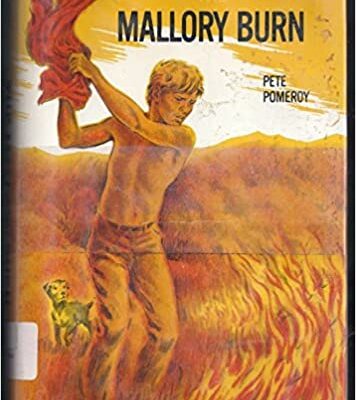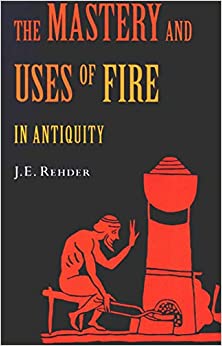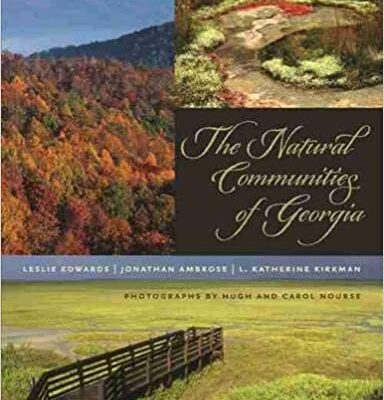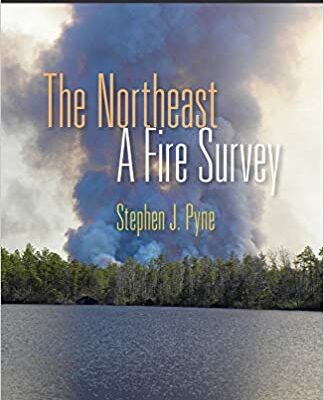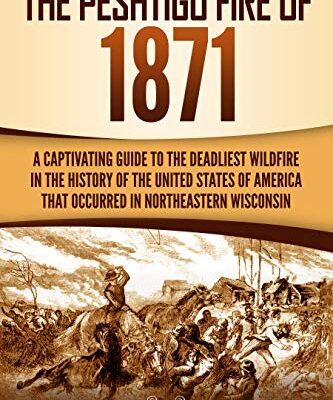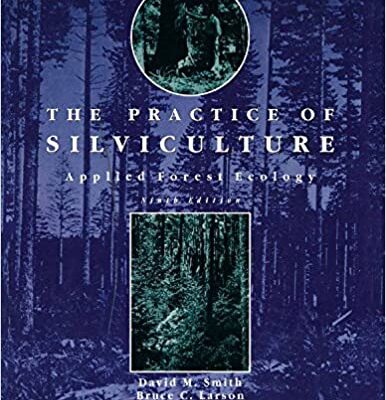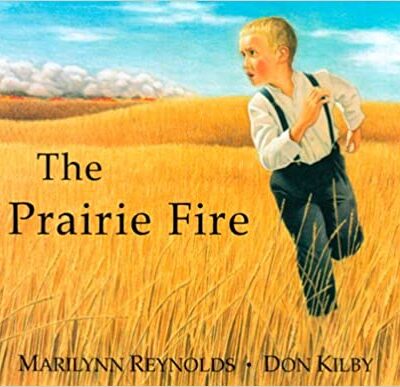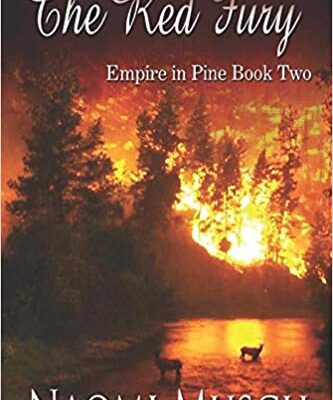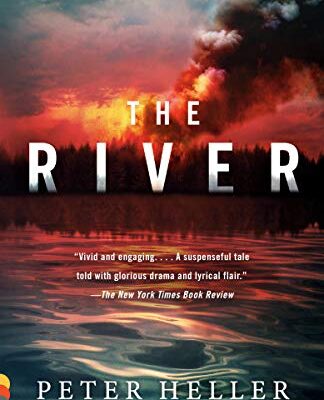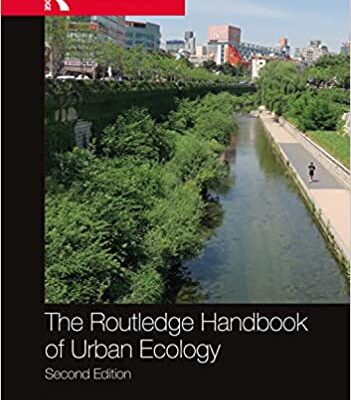The Forest Fire Mystery (The Wilderness Mystery Series)
Paperback – Illustrated, January 7, 2014
by Troy Nesbit (Author)
Art Mills and his family have recently moved to southwestern Colorado. When Art isn’t working in the family’s Dew Drop Inn, he’s out exploring the national forest that surrounds them. A favorite spot is Eagle Mountain, where the abandoned Fittleson’s Folly mine—a good spot for snipe hunting!—is located. When the secretive logger Mr. Maynard threatens Art, his sister Liz, and their friends to stay away, the kids can’t help but wonder what Mr. Maynard is up to. And then once the forest fires start, Art knows someone is up to no good . . . The recurrent themes of the books in the Wilderness Mystery Series are natural phenomena—caves, canyons, mountains, sand dunes, and forests—and a sense of the past as seen through archaeology. In many of the narratives, events of long ago are seen to have left traces of their passing. Notwithstanding the fact that the books were written in the 1950s, the progressive Franklin Folsom (alias Troy Nesbit) had refreshing views of women, Native Americans, and the environment, and he was prescient in having his characters often oppose corporate and government efforts to develop wilderness areas.Paperback – Illustrated, January 7, 2014
by Troy Nesbit (Author)
Art Mills and his family have recently moved to southwestern Colorado. When Art isn’t working in the family’s Dew Drop Inn, he’s out exploring the national forest that surrounds them. A favorite spot is Eagle Mountain, where the abandoned Fittleson’s Folly mine—a good spot for snipe hunting!—is located. When the secretive logger Mr. Maynard threatens Art, his sister Liz, and their friends to stay away, the kids can’t help but wonder what Mr. Maynard is up to. And then once the forest fires start, Art knows someone is up to no good . . . The recurrent themes of the books in the Wilderness Mystery Series are natural phenomena—caves, canyons, mountains, sand dunes, and forests—and a sense of the past as seen through archaeology. In many of the narratives, events of long ago are seen to have left traces of their passing. Notwithstanding the fact that the books were written in the 1950s, the progressive Franklin Folsom (alias Troy Nesbit) had refreshing views of women, Native Americans, and the environment, and he was prescient in having his characters often oppose corporate and government efforts to develop wilderness areas.The Forest for the Trees: How Humans Shaped the North Woods
Paperback – May 15, 2009
by Jeff Forester (Author)
Author Jeff Forester describes how humans have occupied and managed the northern borderlands of Minnesota, from tribal burning to pioneer and industrial logging to evolving conceptions of wilderness and restoration forestry. On the surface a story of Minnesota's borderlands, The Forest for the Trees more broadly explores the nation's history of resource extraction and wilderness preservation, casting forward to consider what today's actions may mean for the future of America's forests. From early settlers and industrialists seeking the pine forests' wealth to modern visitors valuing the tranquility of protected wilderness, the region known today as the Boundary Waters Canoe Area Wilderness has offered assorted treasures to each generation. By focusing on the ecological history of the BWCAW's Winton watershed, Forester shows how the global story of logging, forestry, conservation, and resource management unfolded in the northern woods of Minnesota. The result is a telling exploration of human attitudes toward wilderness: the grasp after a forest's resources, the battles between logging and tourist interests, and decades of conservation efforts that have left northern Minnesota denuded of white pine and threatened with potentially devastating fire. The result of a decade of research, The Forest for the Trees chronicles six phases of human interaction with the BWCAW: tribal, burning the land for cultivation; pioneering, harvesting lumber on a small scale; industrial, accelerating the cut and consequently increasing the fire danger; conservation, reacting to both widespread fires and unsustainable harvest levels; wilderness, recognizing important values in woodlands beyond timber; and finally restoration, using prescribed burns and other techniques to return the forest to its "natural" state. Whether promoted or excluded, one constant through these phases is fire. The Forest for the Trees explores how tribal people burned the land to encourage agriculture, how conservationists and others later fought fire in the woods by completely suppressing it, and finally how scientific understanding brought the debate full circle, as recent controlled burns in the BWCAW seek to lessen significant fuel loads that could produce fires of unprecedented magnitude.Paperback – May 15, 2009
by Jeff Forester (Author)
Author Jeff Forester describes how humans have occupied and managed the northern borderlands of Minnesota, from tribal burning to pioneer and industrial logging to evolving conceptions of wilderness and restoration forestry. On the surface a story of Minnesota's borderlands, The Forest for the Trees more broadly explores the nation's history of resource extraction and wilderness preservation, casting forward to consider what today's actions may mean for the future of America's forests. From early settlers and industrialists seeking the pine forests' wealth to modern visitors valuing the tranquility of protected wilderness, the region known today as the Boundary Waters Canoe Area Wilderness has offered assorted treasures to each generation. By focusing on the ecological history of the BWCAW's Winton watershed, Forester shows how the global story of logging, forestry, conservation, and resource management unfolded in the northern woods of Minnesota. The result is a telling exploration of human attitudes toward wilderness: the grasp after a forest's resources, the battles between logging and tourist interests, and decades of conservation efforts that have left northern Minnesota denuded of white pine and threatened with potentially devastating fire. The result of a decade of research, The Forest for the Trees chronicles six phases of human interaction with the BWCAW: tribal, burning the land for cultivation; pioneering, harvesting lumber on a small scale; industrial, accelerating the cut and consequently increasing the fire danger; conservation, reacting to both widespread fires and unsustainable harvest levels; wilderness, recognizing important values in woodlands beyond timber; and finally restoration, using prescribed burns and other techniques to return the forest to its "natural" state. Whether promoted or excluded, one constant through these phases is fire. The Forest for the Trees explores how tribal people burned the land to encourage agriculture, how conservationists and others later fought fire in the woods by completely suppressing it, and finally how scientific understanding brought the debate full circle, as recent controlled burns in the BWCAW seek to lessen significant fuel loads that could produce fires of unprecedented magnitude.The Forest Of Fire: A Wildfire Story (Storyscapes)
Paperback – August 26, 2016
by Erik Ohlsen (Author)
Discover the secret relationship between forests and wildfire.
The Forest of Fire follows the cycles of a forest from it's pristine natural state to the changes that take place once modernized humans settle there. Healthy fire is removed from the landscape and then...
Fire strikes and all the land burns.
What will happen? Can the forest recover? What will the people living there do? What will they learn? What roles do animals and plants have in restoring the land after fire? Can humans change their relationship to fire once again? Experience the magic that can be held in the seed and roots of plants. Experience the destruction that can be caused by catastrophic fires.
Discover what you can do about it in, The Forest of Fire.
Paperback – August 26, 2016
by Erik Ohlsen (Author)
Discover the secret relationship between forests and wildfire.
The Forest of Fire follows the cycles of a forest from it's pristine natural state to the changes that take place once modernized humans settle there. Healthy fire is removed from the landscape and then...
Fire strikes and all the land burns.
What will happen? Can the forest recover? What will the people living there do? What will they learn? What roles do animals and plants have in restoring the land after fire? Can humans change their relationship to fire once again? Experience the magic that can be held in the seed and roots of plants. Experience the destruction that can be caused by catastrophic fires.
Discover what you can do about it in, The Forest of Fire.
The Forest Service (RFF Press)
Paperback – September 1, 1975
Paperback – September 1, 1975
The Fossil Vertebrates of Florida
Hardcover – February 23, 2001
by Richard C. Hulbert Jr. (Author), Roger Portell (Illustrator)
"Hulbert’s book provides the first comprehensive review of the fossil vertebrates of Florida, which has one of the richest Cenozoic fossil records of any state in the country. It will be an essential addition to the library of all professional paleontologists, students, and amateurs interested in the history of fossil vertebrates in Florida and the southeastern United States."-- Gary S. Morgan, assistant curator of paleontology, New Mexico Museum of Natural History "A wonderful mix of technical, state-of-the-art information . . . with commentary on everyday fossils that all may have experienced at one time or another. The book is both for the serious student of vertebrate paleontology and for anyone who has an interest in the fossils that may be encountered in Florida."-- David P. Whistler, curator of vertebrate paleontology, Natural History Museum of Los Angeles County Illustrated with hundreds of photographs and drawings, this authoritative yet readable book describes the fossil vertebrates found in Florida—many unique to the state--and summarizes more than 100 years of paleontological discoveries and research. It bridges the sometimes disconnected worlds of the professional paleontologist and the avocational collector and hobbyist. Florida has the richest vertebrate fossil record of any state east of the Mississippi, extending back 45 million years. Beginning with an introduction to vertebrate anatomy, Richard Hulbert describes the geological history of the state and the history of vertebrate life in it. He then addresses such questions as what animals lived in Florida, how they are related to one another and to living animals, when they first appeared and when many of them became extinct, what they ate, and what they tell us about past environments. All types of vertebrates are covered, including sharks and other fish, amphibians, reptiles, birds, and mammals. In addition to exceptionally detailed illustrations (many published for the first time), the book includes a comprehensive list of every verified fossil species ever collected in Florida. Based on the popular Plaster Jacket series of pamphlets written by renowned natural scientists and published by the Florida Paleontological Society, The Fossil Vertebrates of Florida brings information from the last 30 years into an up-to-date, greatly expanded, cohesive book form.Hardcover – February 23, 2001
by Richard C. Hulbert Jr. (Author), Roger Portell (Illustrator)
"Hulbert’s book provides the first comprehensive review of the fossil vertebrates of Florida, which has one of the richest Cenozoic fossil records of any state in the country. It will be an essential addition to the library of all professional paleontologists, students, and amateurs interested in the history of fossil vertebrates in Florida and the southeastern United States."-- Gary S. Morgan, assistant curator of paleontology, New Mexico Museum of Natural History "A wonderful mix of technical, state-of-the-art information . . . with commentary on everyday fossils that all may have experienced at one time or another. The book is both for the serious student of vertebrate paleontology and for anyone who has an interest in the fossils that may be encountered in Florida."-- David P. Whistler, curator of vertebrate paleontology, Natural History Museum of Los Angeles County Illustrated with hundreds of photographs and drawings, this authoritative yet readable book describes the fossil vertebrates found in Florida—many unique to the state--and summarizes more than 100 years of paleontological discoveries and research. It bridges the sometimes disconnected worlds of the professional paleontologist and the avocational collector and hobbyist. Florida has the richest vertebrate fossil record of any state east of the Mississippi, extending back 45 million years. Beginning with an introduction to vertebrate anatomy, Richard Hulbert describes the geological history of the state and the history of vertebrate life in it. He then addresses such questions as what animals lived in Florida, how they are related to one another and to living animals, when they first appeared and when many of them became extinct, what they ate, and what they tell us about past environments. All types of vertebrates are covered, including sharks and other fish, amphibians, reptiles, birds, and mammals. In addition to exceptionally detailed illustrations (many published for the first time), the book includes a comprehensive list of every verified fossil species ever collected in Florida. Based on the popular Plaster Jacket series of pamphlets written by renowned natural scientists and published by the Florida Paleontological Society, The Fossil Vertebrates of Florida brings information from the last 30 years into an up-to-date, greatly expanded, cohesive book form.The Fox and the Forest Fire
Hardcover – August 24, 2021
Hardcover – August 24, 2021
The Garnet Fire: True Stories of Monster Cross Winds and a Violent Fire Storm in Penticton, British Columbia, July 1994
Hardcover – January 1, 1995
by Lorraine Pattison (Author)
hardcover 11" x 9 1/2". 137 pages. Many photographs of this historic fire and firefighters.
Hardcover – January 1, 1995
by Lorraine Pattison (Author)
hardcover 11" x 9 1/2". 137 pages. Many photographs of this historic fire and firefighters.
The Great Fires: Indian Burning and Catastrophic Forest Fire Patterns of the Oregon Coast Range, 1491-1951
Hardcover – April 1, 2018
by Bob Zybach(Author)
This study was designed to examine the relationship between land management practices of Indian communities prior to contact with Europeans and the nature or character of subsequent catastrophic forest fires in the Oregon Coast Range. The research focused on spatial and temporal patterns of Indian burning across the landscape from 1491 until 1848, and corresponding patterns of catastrophic fire events from 1849 until 1951. Archival and anthropological research methods were used to obtain early surveys, maps, drawings, photographs, interviews, Geographic Information Systems (GIS) inventories, eyewitness accounts and other sources of evidence that document fire history. Data were tabulated, mapped, and digitized as new GIS layers for purposes of comparative analysis. An abundance of useful historical evidence was found for reconstructing precontact vegetation patterns and human burning practices in western Oregon. The data also proved useful for documenting local and regional forest fire histories. Precontact Indians used fire to produce landscape patterns of trails, patches, fields, woodlands, forests and grasslands that varied from time to time and place to place, partly due to demographic, cultural, topographic, and climatic differences that existed throughout the Coast Range. Native plants were systematically managed by local Indian families in even-aged stands, usually dominated by a single species, throughout all river basins of the study area. Oak, filberts, camas, wapato, tarweed, yampah, strawberries, huckleberries, brackenfern, nettles, and other plants were raised in select areas by all known tribes, over long periods of time. However, current scientific and policy assumptions regarding the abundance and extent of precontact western Oregon old-growth forests may have been erroneous. This study demonstrates a high rate of coincidence between the land management practices of precontact Indian communities, and the causes, timing, boundaries, severity, and extent of subsequent catastrophic forest fires in the same areas. Information developed from this study will be of value to researchers, wildlife managers, forest landowners, and others with an interest in the history and resources of the Oregon Coast Range.
Hardcover – April 1, 2018
by Bob Zybach(Author)
This study was designed to examine the relationship between land management practices of Indian communities prior to contact with Europeans and the nature or character of subsequent catastrophic forest fires in the Oregon Coast Range. The research focused on spatial and temporal patterns of Indian burning across the landscape from 1491 until 1848, and corresponding patterns of catastrophic fire events from 1849 until 1951. Archival and anthropological research methods were used to obtain early surveys, maps, drawings, photographs, interviews, Geographic Information Systems (GIS) inventories, eyewitness accounts and other sources of evidence that document fire history. Data were tabulated, mapped, and digitized as new GIS layers for purposes of comparative analysis. An abundance of useful historical evidence was found for reconstructing precontact vegetation patterns and human burning practices in western Oregon. The data also proved useful for documenting local and regional forest fire histories. Precontact Indians used fire to produce landscape patterns of trails, patches, fields, woodlands, forests and grasslands that varied from time to time and place to place, partly due to demographic, cultural, topographic, and climatic differences that existed throughout the Coast Range. Native plants were systematically managed by local Indian families in even-aged stands, usually dominated by a single species, throughout all river basins of the study area. Oak, filberts, camas, wapato, tarweed, yampah, strawberries, huckleberries, brackenfern, nettles, and other plants were raised in select areas by all known tribes, over long periods of time. However, current scientific and policy assumptions regarding the abundance and extent of precontact western Oregon old-growth forests may have been erroneous. This study demonstrates a high rate of coincidence between the land management practices of precontact Indian communities, and the causes, timing, boundaries, severity, and extent of subsequent catastrophic forest fires in the same areas. Information developed from this study will be of value to researchers, wildlife managers, forest landowners, and others with an interest in the history and resources of the Oregon Coast Range.
The Great Forks Fire
Paperback – January 1, 2003
by Mavis Amundson (Author)
In 1951 a huge forest fire swept across the Olympic Peninsula, headed for the timber town of Forks. But the town fought back. This book is a true story of determination and courage against the backdrop of the rugged Olympic forest.
Paperback – January 1, 2003
by Mavis Amundson (Author)
In 1951 a huge forest fire swept across the Olympic Peninsula, headed for the timber town of Forks. But the town fought back. This book is a true story of determination and courage against the backdrop of the rugged Olympic forest.
The Great Peshtigo Fire: An Eyewitness Account (Wisconsin)
Paperback – May 13, 1999
by Reverend Peter Pernin (Author)
Reverend Peter Pernin was the parish priest for Peshtigo and nearby Marinette, whose churches burned to the ground. He published his account of the fire in 1874. The late William Converse Haygood served as editor of the Wisconsin Magazine of History from 1957 to 1975. He prepared this version of Father Pernin's account on the occasion of the Peshtigo Fire's centennial in 1971. Foreword writer Stephen J. Pyne is a professor at Arizona State University in Tempe and author of numerous books on wildland fire, including Fire in America.
Paperback – May 13, 1999
by Reverend Peter Pernin (Author)
Reverend Peter Pernin was the parish priest for Peshtigo and nearby Marinette, whose churches burned to the ground. He published his account of the fire in 1874. The late William Converse Haygood served as editor of the Wisconsin Magazine of History from 1957 to 1975. He prepared this version of Father Pernin's account on the occasion of the Peshtigo Fire's centennial in 1971. Foreword writer Stephen J. Pyne is a professor at Arizona State University in Tempe and author of numerous books on wildland fire, including Fire in America.
The Great Peshtigo Fire: Stories and Science from America’s Deadliest Fire
Paperback – October 9, 2012
by Scott Knickelbine (Author)
On the night of October 8, 1871, a whirlwind of fire swept through northeastern Wisconsin, destroying the bustling frontier town of Peshtigo. Trees, buildings, and people burst into flames. Metal melted. Sand turned into glass. People thought the end of the world had come. When the “tornado of fire” was over, 2,500 people were dead, and Peshtigo was nothing but a smoking ruin. It was the deadliest wildfire in U.S. history. The Great Peshtigo Fire: Stories and Science from America’s Deadliest Firestorm explores the history, science, and legacy of the 1871 Peshtigo Fire at a fourth-grade reading level. Readers will learn about the history of settlement, agriculture, and forestry in 19th-century Wisconsin. This illuminating text covers a diverse range of topics that will enrich the reader’s understanding of the Peshtigo Fire, including the building and land-use practices of the time that made the area ripe for such a fire, the weather patterns that fostered widespread fires throughout the upper Midwest in the summer and fall of 1871, and exciting first-person accounts that vividly bring the `victims’ stories to life. Connections made between the Peshtigo Fire and the history of fire prevention in the United States encourage critical thinking about issues that remain controversial to this day, such as planned burns and housing development restrictions near forested areas. The Great Peshtigo Fire: Stories and Science from America’s Deadliest Firestorm will inform and captivate its readers as it journeys through the horrifying history of the Peshtigo Fire.Paperback – October 9, 2012
by Scott Knickelbine (Author)
On the night of October 8, 1871, a whirlwind of fire swept through northeastern Wisconsin, destroying the bustling frontier town of Peshtigo. Trees, buildings, and people burst into flames. Metal melted. Sand turned into glass. People thought the end of the world had come. When the “tornado of fire” was over, 2,500 people were dead, and Peshtigo was nothing but a smoking ruin. It was the deadliest wildfire in U.S. history. The Great Peshtigo Fire: Stories and Science from America’s Deadliest Firestorm explores the history, science, and legacy of the 1871 Peshtigo Fire at a fourth-grade reading level. Readers will learn about the history of settlement, agriculture, and forestry in 19th-century Wisconsin. This illuminating text covers a diverse range of topics that will enrich the reader’s understanding of the Peshtigo Fire, including the building and land-use practices of the time that made the area ripe for such a fire, the weather patterns that fostered widespread fires throughout the upper Midwest in the summer and fall of 1871, and exciting first-person accounts that vividly bring the `victims’ stories to life. Connections made between the Peshtigo Fire and the history of fire prevention in the United States encourage critical thinking about issues that remain controversial to this day, such as planned burns and housing development restrictions near forested areas. The Great Peshtigo Fire: Stories and Science from America’s Deadliest Firestorm will inform and captivate its readers as it journeys through the horrifying history of the Peshtigo Fire.The Great Plains: A Fire Survey (To the Last Smoke Book 5)
Kindle Edition
by Stephen J. Pyne (Author) Format: Kindle Edition
Early descriptions of the Great Plains often focus on a vast, grassy expanse that was either burnt or burning. The scene continued to burn until the land was plowed under or grazed away and broken by innumerable roads and towns. Yet, where the original landscape has persisted, so has fire, and where people have sought to restore something of that original setting, they have had to reinstate fire. This has required the persistence or creation of a fire culture, which in turn inspired schools of science and art that make the Great Plains today a regional hearth for American fire. Volume 5 of To the Last Smoke introduces a region that once lay at the geographic heart of American fire, and today promises to reclaim something of that heritage. After all these years, the Great Plains continue to bear witness to how fires can shape contemporary life, and vice versa. In this collection of essays, Stephen J. Pyne explores how this once most regularly and widely burned province of North America, composed of various subregions and peoples, has been shaped by the flames contained within it and what fire, both tame and feral, might mean for the future of its landscapes. Included in this volume:
-
- How wildland and rural fire have changed from the 19th century to the 21st century
-
- How fire is managed in the nation’s historic tallgrass prairies, from Texas to South Dakota, from Illinois to Nebraska
-
- How fire connects with other themes of Great Plains life and culture
- How and why Texas has returned to the national narrative of landscape fire
Kindle Edition
by Stephen J. Pyne (Author) Format: Kindle Edition
Early descriptions of the Great Plains often focus on a vast, grassy expanse that was either burnt or burning. The scene continued to burn until the land was plowed under or grazed away and broken by innumerable roads and towns. Yet, where the original landscape has persisted, so has fire, and where people have sought to restore something of that original setting, they have had to reinstate fire. This has required the persistence or creation of a fire culture, which in turn inspired schools of science and art that make the Great Plains today a regional hearth for American fire. Volume 5 of To the Last Smoke introduces a region that once lay at the geographic heart of American fire, and today promises to reclaim something of that heritage. After all these years, the Great Plains continue to bear witness to how fires can shape contemporary life, and vice versa. In this collection of essays, Stephen J. Pyne explores how this once most regularly and widely burned province of North America, composed of various subregions and peoples, has been shaped by the flames contained within it and what fire, both tame and feral, might mean for the future of its landscapes. Included in this volume:
-
- How wildland and rural fire have changed from the 19th century to the 21st century
-
- How fire is managed in the nation’s historic tallgrass prairies, from Texas to South Dakota, from Illinois to Nebraska
-
- How fire connects with other themes of Great Plains life and culture
- How and why Texas has returned to the national narrative of landscape fire
The Great Possum Creek Bush Fire
Paperback – October 1, 1989
by Dan Vallely (Author), Yvonne Perrin (Illustrator)
The residents of Possum Creek band together to save their town from a bush fire, using an unusual substitute when the water runs out.
Paperback – October 1, 1989
by Dan Vallely (Author), Yvonne Perrin (Illustrator)
The residents of Possum Creek band together to save their town from a bush fire, using an unusual substitute when the water runs out.
The Great Yellowstone Fire
Hardcover – May 1, 1990
by Carole Garbuny Vogel (Author), Kathryn Allen Goldner (Author)
Describes the huge forest fires that burned almost one million acres of Yellowstone National Park in 1988 and the effects on the ecology of the forest there
Hardcover – May 1, 1990
by Carole Garbuny Vogel (Author), Kathryn Allen Goldner (Author)
Describes the huge forest fires that burned almost one million acres of Yellowstone National Park in 1988 and the effects on the ecology of the forest there
the Handbook of Biomass Combustion and Co-firing
1st Edition
by Sjaak van Loo (Editor), Jaap Koppejan (Editor)
1st Edition
by Sjaak van Loo (Editor), Jaap Koppejan (Editor)
The Hinckley fire
Paperback – January 1, 1993
by Antone A Anderson (Author)
Paperback – January 1, 1993
by Antone A Anderson (Author)
The Human Past: World History & the Development of Human Societies
Fourth Edition
by Chris Scarre (Author)
The Human Past has established itself as a thorough and authoritative survey of human prehistory and the development of civilizations. Written by an international team of respected experts in the field, it presents a streamlined overview that can be broken down into a series of chapters focusing on individual regions and time periods. The Fourth Edition has been completely revised with key theme feature boxes, a new chapter on the peopling of the Americas, a section on methods and theories, full-color maps, timelines, illustrations, new coverage of sites and discoveries, and a fully updated e-media package, including all images from the book, test questions, and videos. 755+ illustrations
Fourth Edition
by Chris Scarre (Author)
The Human Past has established itself as a thorough and authoritative survey of human prehistory and the development of civilizations. Written by an international team of respected experts in the field, it presents a streamlined overview that can be broken down into a series of chapters focusing on individual regions and time periods. The Fourth Edition has been completely revised with key theme feature boxes, a new chapter on the peopling of the Americas, a section on methods and theories, full-color maps, timelines, illustrations, new coverage of sites and discoveries, and a fully updated e-media package, including all images from the book, test questions, and videos. 755+ illustrations
The Importance of Biological Interactions in the Study of Biodiversity
The Interior West: A Fire Survey (To the Last Smoke)
Paperback – March 13, 2018
by Stephen J. Pyne(Author)
Its fires help to give the Interior West a peculiar character, fundamental to its natural and human histories. While a general aridity unites the region—defined here as Nevada, Utah, and western Colorado—its fires illuminate the ways that the region’s various parts show profoundly different landscapes, biotas, and human settlement experiences. In this collection of essays, fire historian Stephen J. Pyne explains the relevance of the Interior West to the national fire scene. This region offered the first scientific inquiry into landscape fire in the United States, including a map of Utah burns published in 1878 as part of John Wesley Powell’s Arid Lands report. Then its significance faded, and for most of the 20th century, the Interior West was the hole in the national donut of fire management. Recently the region has returned to prominence due to fires along its front ranges; invasive species, both exotics like cheatgrass and unleashed natives like mountain pine beetle; and fatality fires, notably at South Canyon in 1994.
Paperback – March 13, 2018
by Stephen J. Pyne(Author)
Its fires help to give the Interior West a peculiar character, fundamental to its natural and human histories. While a general aridity unites the region—defined here as Nevada, Utah, and western Colorado—its fires illuminate the ways that the region’s various parts show profoundly different landscapes, biotas, and human settlement experiences. In this collection of essays, fire historian Stephen J. Pyne explains the relevance of the Interior West to the national fire scene. This region offered the first scientific inquiry into landscape fire in the United States, including a map of Utah burns published in 1878 as part of John Wesley Powell’s Arid Lands report. Then its significance faded, and for most of the 20th century, the Interior West was the hole in the national donut of fire management. Recently the region has returned to prominence due to fires along its front ranges; invasive species, both exotics like cheatgrass and unleashed natives like mountain pine beetle; and fatality fires, notably at South Canyon in 1994.
The Kruger Experience: Ecology And Management Of Savanna Heterogeneity
2nd ed. Edition
by Johan T. du Toit(Editor), Kevin H. Rogers(Editor), Harry C. Biggs(Editor), Anthony R.E. Sinclair(Foreword), Brian Walker PhD(Foreword)
- the historical context of research and management in Kruger, the theme of heterogeneity, and the current philosophy in Kruger for linking science with management
- the template of natural components and processes, as influenced by management, that determine the present state of the Kruger ecosystem
- how species interact within the ecosystem to generate further heterogeneity across space and time
- humans as key components of savanna ecosystems
2nd ed. Edition
by Johan T. du Toit(Editor), Kevin H. Rogers(Editor), Harry C. Biggs(Editor), Anthony R.E. Sinclair(Foreword), Brian Walker PhD(Foreword)
- the historical context of research and management in Kruger, the theme of heterogeneity, and the current philosophy in Kruger for linking science with management
- the template of natural components and processes, as influenced by management, that determine the present state of the Kruger ecosystem
- how species interact within the ecosystem to generate further heterogeneity across space and time
- humans as key components of savanna ecosystems
The Lake Is on Fire
Hardcover – October 1, 1981
by Maureen Crane Wartski (Author)
A recently blinded teenage boy and a man-hating German shepherd dog are thrown together in a lonely struggle for survival against a New Hampshire forest fire.
Hardcover – October 1, 1981
by Maureen Crane Wartski (Author)
A recently blinded teenage boy and a man-hating German shepherd dog are thrown together in a lonely struggle for survival against a New Hampshire forest fire.
The Lightning Book
Hardcover – September 28, 2013
by Peter E. Viemeister (Author), Read Viemeister (Illustrator)
Hardcover – September 28, 2013
by Peter E. Viemeister (Author), Read Viemeister (Illustrator)
The Longleaf Pine Ecosystem: Ecology, Silviculture, and Restoration (Springer Series on Environmental Management)
Text is Free of Markings Edition
by Shibu Jose(Editor), Eric J. Jokela(Editor), Deborah L. Miller(Editor)
This book unites a wealth of current information on the ecology, silviculture and restoration of the Longleaf Pine ecosystem. The book includes a discussion of the significant historical, social and political aspects of ecosystem management, making it a valuable resource for students, land managers, ecologists, private landowners, government agencies, consultants and the forest products industry.
Text is Free of Markings Edition
by Shibu Jose(Editor), Eric J. Jokela(Editor), Deborah L. Miller(Editor)
This book unites a wealth of current information on the ecology, silviculture and restoration of the Longleaf Pine ecosystem. The book includes a discussion of the significant historical, social and political aspects of ecosystem management, making it a valuable resource for students, land managers, ecologists, private landowners, government agencies, consultants and the forest products industry.
The Magic School Bus to the Rescue Forest Fire (The Magic School Bus to the Rescue, 1)
Paperback – January 1, 2002
by Anne Capeci (Author)
Paperback – January 1, 2002
by Anne Capeci (Author)
The Mallory Burn
Library Binding – January 1, 1971
by Pete Pomeroy (Author)
Library Binding – January 1, 1971
by Pete Pomeroy (Author)
The Mastery and Uses of Fire in Antiquity
Paperback – Illustrated, January 5, 2006
by J.E. Rehder
Because pyrotechnology was considered a demeaning craft, there is very little about its practice in ancient texts; our knowledge of early developments is based almost entirely on interpretation of artifacts recovered by archaeology during the past century and a half. Literature in archaeology and anthropology, however, tends to concentrate on the artifact found rather than on how it was produced - on the pot or spearhead rather than the kiln or furnace.
Paperback – Illustrated, January 5, 2006
by J.E. Rehder
Because pyrotechnology was considered a demeaning craft, there is very little about its practice in ancient texts; our knowledge of early developments is based almost entirely on interpretation of artifacts recovered by archaeology during the past century and a half. Literature in archaeology and anthropology, however, tends to concentrate on the artifact found rather than on how it was produced - on the pot or spearhead rather than the kiln or furnace.
The Monster Reared His Ugly Head, the Story of the Rodeo-Chediski Fire
Hardcover – May 7, 2007
by Jim Paxon (Author), Becky Hayes (Editor), Ken Palmrose (Content) (Editor), Photos (Illustrator)
Hadcover book w/ dustcover that is Smyth sewn and presented as a beautiful 8 1/2" x 11" "Coffee Table" book chock full of information on wild fires and almost 300 spectacular photos of fire "up close and personal," most taken by firefighters on the fireline. The Rodeo Fire was ignited at approximately 4:00 p.m. on June 18, 2007 in tender dry forests by a parttime firefighter hoping to gain short term employment. Two days later, a lost hiker started a signal blaze that became the Chediski Fire. Three days later the two fires burned together and became the largest and most destuctive fire in Arizona's history. When finally contained, the Rodeo-Chediski Fire had burned 731 square miles (468,000 acres), destroyed 465 homes and six businesses and forced 35,000 people to flee their homes for as long as two weeks. At the peak of the fire, 4500 firefighters and support personnel worked at controlling the blaze. Jim Paxon was the designated National Spokesman for the Southwest Incident Management Team that responded to Show Low, Arizona to battle the blaze. He became a fixture in living rooms and on radio with twice daily briefings and many special reports carried by all the media in the area. This book is a journal of the fire, day by day, through his eyes. In addition there are chapters on the ecology of forests and fires, a chapter on firefighters and their equipment and tactics in fighting fire and a chapter on Incident Management Team organization and operation during a climax incident like a raging wildfire. The photos alone will give a reader an appreciation and greater understanding of wildfire as a major force in nature.
Hardcover – May 7, 2007
by Jim Paxon (Author), Becky Hayes (Editor), Ken Palmrose (Content) (Editor), Photos (Illustrator)
Hadcover book w/ dustcover that is Smyth sewn and presented as a beautiful 8 1/2" x 11" "Coffee Table" book chock full of information on wild fires and almost 300 spectacular photos of fire "up close and personal," most taken by firefighters on the fireline. The Rodeo Fire was ignited at approximately 4:00 p.m. on June 18, 2007 in tender dry forests by a parttime firefighter hoping to gain short term employment. Two days later, a lost hiker started a signal blaze that became the Chediski Fire. Three days later the two fires burned together and became the largest and most destuctive fire in Arizona's history. When finally contained, the Rodeo-Chediski Fire had burned 731 square miles (468,000 acres), destroyed 465 homes and six businesses and forced 35,000 people to flee their homes for as long as two weeks. At the peak of the fire, 4500 firefighters and support personnel worked at controlling the blaze. Jim Paxon was the designated National Spokesman for the Southwest Incident Management Team that responded to Show Low, Arizona to battle the blaze. He became a fixture in living rooms and on radio with twice daily briefings and many special reports carried by all the media in the area. This book is a journal of the fire, day by day, through his eyes. In addition there are chapters on the ecology of forests and fires, a chapter on firefighters and their equipment and tactics in fighting fire and a chapter on Incident Management Team organization and operation during a climax incident like a raging wildfire. The photos alone will give a reader an appreciation and greater understanding of wildfire as a major force in nature.
The Natural Communities of Georgia
Hardcover – February 25, 2013
by Jonathan Ambrose (Editor), L. Katherine Kirkman (Editor), Leslie Edwards (Editor), Carol Nourse (Photographer), Hugh Nourse (Photographer), Bradford Winn (Contributor), Carlos D. Camp (Contributor), James Renner (Contributor), Jerry McCollum (Contributor), John Costello (Contributor), Ken Terrell (Contributor), Kevin McIntyre (Contributor), Michael Morris (Contributor), Mincy Moffett (Contributor), Nathan A. Klaus (Contributor), Philip Freshley (Contributor), Sean Beeching (Contributor), Timothy S. Keyes (Contributor), Todd M. Schneider (Contributor), Woody Hicks (Contributor)
The Natural Communities of Georgia presents a comprehensive overview of the state’s natural landscapes, providing an ecological context to enhance understanding of this region’s natural history. Georgia boasts an impressive range of natural communities, assemblages of interacting species that have either been minimally impacted by modern human activities or have successfully recovered from them. This guide makes the case that identifying these distinctive communities and the factors that determine their distribution are central to understanding Georgia’s ecological diversity and the steps necessary for its conservation. Within Georgia’s five major ecoregions the editors identify and describe a total of sixty-six natural communities, such as the expansive salt marshes of the barrier islands in the Maritime ecoregion, the fire-driven longleaf pine woodlands of the Coastal Plain, the beautiful granite outcrops of the Piedmont, the rare prairies of the Ridge and Valley, and the diverse coves of the Blue Ridge. The description of each natural community includes Traits that make it interesting and significant Physical factors and ecological processes that determine the distribution and characteristics of each community Typical plant communities Representative or noteworthy animals Sidebars that discuss particularly interesting features With contributions from scientists who have managed, researched, and written about Georgia landscapes for decades, the guide features more than four hundred color photographs that reveal the stunning natural beauty and diversity of the state. The book also explores conservation issues, including rare or declining species, current and future threats to specific areas, and research needs, and provides land management strategies for preserving, restoring, and maintaining biotic communities. The Natural Communities of Georgia is an essential reference for ecologists and other scientists, as well as a rich resource for Georgians interested in the region’s natural heritage. Major support for this project was provided by the AGL Resources Foundation. Additional support was provided by the Georgia Department of Natural Resources, Wildlife Resources Division. In-kind support was provided by the Joseph W. Jones Ecological Research Center at Ichauway and Georgia State University.
Hardcover – February 25, 2013
by Jonathan Ambrose (Editor), L. Katherine Kirkman (Editor), Leslie Edwards (Editor), Carol Nourse (Photographer), Hugh Nourse (Photographer), Bradford Winn (Contributor), Carlos D. Camp (Contributor), James Renner (Contributor), Jerry McCollum (Contributor), John Costello (Contributor), Ken Terrell (Contributor), Kevin McIntyre (Contributor), Michael Morris (Contributor), Mincy Moffett (Contributor), Nathan A. Klaus (Contributor), Philip Freshley (Contributor), Sean Beeching (Contributor), Timothy S. Keyes (Contributor), Todd M. Schneider (Contributor), Woody Hicks (Contributor)
The Natural Communities of Georgia presents a comprehensive overview of the state’s natural landscapes, providing an ecological context to enhance understanding of this region’s natural history. Georgia boasts an impressive range of natural communities, assemblages of interacting species that have either been minimally impacted by modern human activities or have successfully recovered from them. This guide makes the case that identifying these distinctive communities and the factors that determine their distribution are central to understanding Georgia’s ecological diversity and the steps necessary for its conservation. Within Georgia’s five major ecoregions the editors identify and describe a total of sixty-six natural communities, such as the expansive salt marshes of the barrier islands in the Maritime ecoregion, the fire-driven longleaf pine woodlands of the Coastal Plain, the beautiful granite outcrops of the Piedmont, the rare prairies of the Ridge and Valley, and the diverse coves of the Blue Ridge. The description of each natural community includes Traits that make it interesting and significant Physical factors and ecological processes that determine the distribution and characteristics of each community Typical plant communities Representative or noteworthy animals Sidebars that discuss particularly interesting features With contributions from scientists who have managed, researched, and written about Georgia landscapes for decades, the guide features more than four hundred color photographs that reveal the stunning natural beauty and diversity of the state. The book also explores conservation issues, including rare or declining species, current and future threats to specific areas, and research needs, and provides land management strategies for preserving, restoring, and maintaining biotic communities. The Natural Communities of Georgia is an essential reference for ecologists and other scientists, as well as a rich resource for Georgians interested in the region’s natural heritage. Major support for this project was provided by the AGL Resources Foundation. Additional support was provided by the Georgia Department of Natural Resources, Wildlife Resources Division. In-kind support was provided by the Joseph W. Jones Ecological Research Center at Ichauway and Georgia State University.
The new deal in the suburbs;: A history of the greenbelt town program
1935-1954 Hardcover – January 1, 1971
by Joseph L Arnold (Author)
"It is a rare surprise to find a doctoral dissertation that turns out this good. Arnold somehow manages to explain the significance of many of the New Deal's alphabet soup agencies while focusing his story on the main players' characters and motivations. Rexford Tugwell's insouciant megalomania are perfectly on display here, as is a nation's fascinated horror about his (the RA's), "Soviet Communes in America." FDR's interest in the program is traced back to his city planning uncle Frederick Delano, who would wax philosophic to a young FDR on the need for comprehensive regional plans. Even Dean Acheson makes an improbable appearance here as a land syndicate lawyer suing to stop a public housing program in the New Jersey countryside. But as is appropriate with a story about a social experiment, Arnold also examines the effects of the experiment on the test subjects. He finds that the early inhabitants of these new towns founded a variety of institutions that spontaneously mirrored many the New Dealers were trying to form from on high. There were credit and shopping cooperatives, non-profit hospitals, community newspapers. Most failed quickly, but a few survive to this day (Greenbelts co-op grocery is still there, check it out)." by Frank Stein
1935-1954 Hardcover – January 1, 1971
by Joseph L Arnold (Author)
"It is a rare surprise to find a doctoral dissertation that turns out this good. Arnold somehow manages to explain the significance of many of the New Deal's alphabet soup agencies while focusing his story on the main players' characters and motivations. Rexford Tugwell's insouciant megalomania are perfectly on display here, as is a nation's fascinated horror about his (the RA's), "Soviet Communes in America." FDR's interest in the program is traced back to his city planning uncle Frederick Delano, who would wax philosophic to a young FDR on the need for comprehensive regional plans. Even Dean Acheson makes an improbable appearance here as a land syndicate lawyer suing to stop a public housing program in the New Jersey countryside. But as is appropriate with a story about a social experiment, Arnold also examines the effects of the experiment on the test subjects. He finds that the early inhabitants of these new towns founded a variety of institutions that spontaneously mirrored many the New Dealers were trying to form from on high. There were credit and shopping cooperatives, non-profit hospitals, community newspapers. Most failed quickly, but a few survive to this day (Greenbelts co-op grocery is still there, check it out)." by Frank Stein
The Northeast: A Fire Survey (To the Last Smoke)
Paperback – Illustrated, April 9, 2019
by Stephen J. Pyne (Author)
Repeatedly, if paradoxically, the Northeast has led national developments in fire. Its intellectuals argued for model preserves in the Adirondacks and at Yellowstone, oversaw the first mapping of the American fire scene for the 1880 census, staffed the 1896 National Academy of Sciences forest commission that laid down guidelines for the national forests, and spearheaded legislation that allowed those reserves to expand by purchase. It trained the leaders who staffed those protected areas and produced most of America’s first environmentalists. The Northeast has its roster of great fires, beginning with dark days in the late 18th century, followed by a chronicle of conflagrations continuing as late as 1903 and 1908, with a shocking after-tremor in 1947. It hosted the nation’s first forestry schools. It organized the first interstate (and international) fire compact. And it was the Northeast that pioneered the transition to the true Big Burn—industrial combustion—as America went from burning living landscapes to burning lithic ones. In this new book in the To the Last Smoke series, renowned fire expert Stephen J. Pyne narrates this history and explains how fire is returning to a place not usually thought of in America’s fire scene. He examines what changes in climate and land use mean for wildfire, what fire ecology means for cultural landscapes, and what experiments are underway to reintroduce fire to habitats that need it. The region’s great fires have gone; its influence on the national scene has not. The Northeast: A Fire Survey samples the historic and contemporary significance of the region and explains how it fits into a national cartography and narrative of fire. Included in this volume: How the region shaped America’s understanding of and policy toward fire How fire fits into the region today What fire in the region means for the rest of the country What changes in climate, land use, and institutions may mean for the region
Paperback – Illustrated, April 9, 2019
by Stephen J. Pyne (Author)
Repeatedly, if paradoxically, the Northeast has led national developments in fire. Its intellectuals argued for model preserves in the Adirondacks and at Yellowstone, oversaw the first mapping of the American fire scene for the 1880 census, staffed the 1896 National Academy of Sciences forest commission that laid down guidelines for the national forests, and spearheaded legislation that allowed those reserves to expand by purchase. It trained the leaders who staffed those protected areas and produced most of America’s first environmentalists. The Northeast has its roster of great fires, beginning with dark days in the late 18th century, followed by a chronicle of conflagrations continuing as late as 1903 and 1908, with a shocking after-tremor in 1947. It hosted the nation’s first forestry schools. It organized the first interstate (and international) fire compact. And it was the Northeast that pioneered the transition to the true Big Burn—industrial combustion—as America went from burning living landscapes to burning lithic ones. In this new book in the To the Last Smoke series, renowned fire expert Stephen J. Pyne narrates this history and explains how fire is returning to a place not usually thought of in America’s fire scene. He examines what changes in climate and land use mean for wildfire, what fire ecology means for cultural landscapes, and what experiments are underway to reintroduce fire to habitats that need it. The region’s great fires have gone; its influence on the national scene has not. The Northeast: A Fire Survey samples the historic and contemporary significance of the region and explains how it fits into a national cartography and narrative of fire. Included in this volume: How the region shaped America’s understanding of and policy toward fire How fire fits into the region today What fire in the region means for the rest of the country What changes in climate, land use, and institutions may mean for the region
The Northern Rockies: A Fire Survey (To the Last Smoke)
Paperback – September 13, 2016
by Stephen J. Pyne (Author)'
It’s a place of big skies and big fires, big burns like those of 1910 and 1988 that riveted national attention. Conflagrations like those of 1934 and 2007 that reformed national policy. Blowups like that in Mann Gulch that shaped the literature of American fire. Big fires mostly hidden in the backcountry like the Fitz Creek and Howler fires that inspired the practice of managed wildfires. Until the fire revolution of the 1960s, no region so shaped the American way of fire. The Northern Rockies remain one of three major hearths for America’s fire culture. They hold a major fire laboratory, an equipment development center, an aerial fire depot, and a social engagement with fire—even a literature. Missoula is to fire in the big backcountry what Tallahassee is to prescribed burning and what Southern California is to urban-wildland hybrids. On its margins, Boise hosts the National Interagency Fire Center. In this structured collection of essays on the region, Stephen J. Pyne explores what makes the Northern Rockies distinctive and what sets it apart from other regions of the country. Surprisingly, perhaps, the story is equally one of big bureaucracies and of generations that encounter the region’s majestic landscapes through flame. The Northern Rockies is part of a multivolume series describing the nation’s fire scene region by region. The volumes in To the Last Smoke also cover Florida, the Northern Rockies, the Great Plains, the Southwest, and several other critical fire regions. The series serves as an important punctuation point to Pyne’s 50-year career with wildland fire—both as a firefighter and a fire scholar. These unique surveys of regional pyrogeography are Pyne’s way of “keeping with it to the end,” encompassing the directive from his rookie season to stay with every fire “to the last smoke.”
Paperback – September 13, 2016
by Stephen J. Pyne (Author)'
It’s a place of big skies and big fires, big burns like those of 1910 and 1988 that riveted national attention. Conflagrations like those of 1934 and 2007 that reformed national policy. Blowups like that in Mann Gulch that shaped the literature of American fire. Big fires mostly hidden in the backcountry like the Fitz Creek and Howler fires that inspired the practice of managed wildfires. Until the fire revolution of the 1960s, no region so shaped the American way of fire. The Northern Rockies remain one of three major hearths for America’s fire culture. They hold a major fire laboratory, an equipment development center, an aerial fire depot, and a social engagement with fire—even a literature. Missoula is to fire in the big backcountry what Tallahassee is to prescribed burning and what Southern California is to urban-wildland hybrids. On its margins, Boise hosts the National Interagency Fire Center. In this structured collection of essays on the region, Stephen J. Pyne explores what makes the Northern Rockies distinctive and what sets it apart from other regions of the country. Surprisingly, perhaps, the story is equally one of big bureaucracies and of generations that encounter the region’s majestic landscapes through flame. The Northern Rockies is part of a multivolume series describing the nation’s fire scene region by region. The volumes in To the Last Smoke also cover Florida, the Northern Rockies, the Great Plains, the Southwest, and several other critical fire regions. The series serves as an important punctuation point to Pyne’s 50-year career with wildland fire—both as a firefighter and a fire scholar. These unique surveys of regional pyrogeography are Pyne’s way of “keeping with it to the end,” encompassing the directive from his rookie season to stay with every fire “to the last smoke.”
The Peshtigo Fire of 1871: A Captivating Guide to the Deadliest Wildfire in the History of the United States of America That Occurred in Northeastern Wisconsin (Captivating History)
Kindle Edition
by Captivating History (Author) Format: Kindle Edition
If you want to discover the history of the Peshtigo Fire of 1871, then keep reading...
It’s likely true that most people picking up this book have never even heard of a place called Peshtigo. This is hardly surprising: this little town on the shores of Lake Michigan is hardly a remarkable place in the modern day. Its residents number less than four thousand, and there’s nothing particularly special about it at first glance. But one does have to look twice at its motto. “A city rebuilt from the ashes.” Peshtigo may be just another small Wisconsin town today, but a hundred and fifty years ago, it really was nothing but ashes. This town was one of the hardest hit in the deadliest wildfire event in American history—and no, I’m not talking about the Great Chicago Fire, even though it also occurred on the very same night. The Great Peshtigo Fire of 1871 claimed four times as many lives as the fire in Chicago, and yet this cruel twist of fate has left it almost unheard-of, while the (untrue) tale of Catherine O’Leary’s cow continues to echo through the centuries with unabated vigor. The story of the Great Peshtigo Fire has not been told nearly often enough, and yet it is a story that will captivate every reader. Parts of it seem to border on science fiction: trees exploding in the heat of the fire, a tornado made of flames sweeping through an entire town in a single hour, birds caught up and burned in mid-air. Yet all of it is true, and so are the stories of the people who witnessed the fire first-hand and survived it.
Kindle Edition
by Captivating History (Author) Format: Kindle Edition
If you want to discover the history of the Peshtigo Fire of 1871, then keep reading...
It’s likely true that most people picking up this book have never even heard of a place called Peshtigo. This is hardly surprising: this little town on the shores of Lake Michigan is hardly a remarkable place in the modern day. Its residents number less than four thousand, and there’s nothing particularly special about it at first glance. But one does have to look twice at its motto. “A city rebuilt from the ashes.” Peshtigo may be just another small Wisconsin town today, but a hundred and fifty years ago, it really was nothing but ashes. This town was one of the hardest hit in the deadliest wildfire event in American history—and no, I’m not talking about the Great Chicago Fire, even though it also occurred on the very same night. The Great Peshtigo Fire of 1871 claimed four times as many lives as the fire in Chicago, and yet this cruel twist of fate has left it almost unheard-of, while the (untrue) tale of Catherine O’Leary’s cow continues to echo through the centuries with unabated vigor. The story of the Great Peshtigo Fire has not been told nearly often enough, and yet it is a story that will captivate every reader. Parts of it seem to border on science fiction: trees exploding in the heat of the fire, a tornado made of flames sweeping through an entire town in a single hour, birds caught up and burned in mid-air. Yet all of it is true, and so are the stories of the people who witnessed the fire first-hand and survived it.
The Peshtigo Fire of 1871: The Story of the Deadliest Fire in American History
Audible Audiobook – Unabridged
Charles River Editors (Author, Publisher), Tim Harwood (Narrator)
Audible Audiobook – Unabridged
Charles River Editors (Author, Publisher), Tim Harwood (Narrator)
The Practice Of Silviculture: Applied Forest Ecology
Paperback – October 15, 2014
by smith d.m.(Author)
Please Read Notes: Brand New, International Softcover Edition, Printed in black and white pages, minor self wear on the cover or pages, Sale restriction may be printed on the book, but Book name, contents, and author are exactly same as Hardcover Edition. Fast delivery through DHL/FedEx express.
Paperback – October 15, 2014
by smith d.m.(Author)
Please Read Notes: Brand New, International Softcover Edition, Printed in black and white pages, minor self wear on the cover or pages, Sale restriction may be printed on the book, but Book name, contents, and author are exactly same as Hardcover Edition. Fast delivery through DHL/FedEx express.
The Practice of Wildlife Conservation
Hardcover – Import, January 1, 1951
by Leonard W. Wing(Author)
My experience in teaching the subject at the college level and in working with various conservation departments and their personnel has indicated the need of a general textbook covering the broad field of wildlife conservation and management. The book tries to blend the theoretical and scientific aspects with actual field practice along lines that experience has shown to be desirable and workable. In so doing, the considers the land picture existing today, after man has injected himself into it.
Hardcover – Import, January 1, 1951
by Leonard W. Wing(Author)
My experience in teaching the subject at the college level and in working with various conservation departments and their personnel has indicated the need of a general textbook covering the broad field of wildlife conservation and management. The book tries to blend the theoretical and scientific aspects with actual field practice along lines that experience has shown to be desirable and workable. In so doing, the considers the land picture existing today, after man has injected himself into it.
The Prairie Fire
Hardcover – September 1, 1999
by Marilynn Reynolds (Author), Don Kilby (Illustrator)
When a prairie fire nears the family homestead, young Percy shows just how useful he can be.
Hardcover – September 1, 1999
by Marilynn Reynolds (Author), Don Kilby (Illustrator)
When a prairie fire nears the family homestead, young Percy shows just how useful he can be.
The Pyrocene: How We Created an Age of Fire, and What Happens Next
Hardcover – September 7, 2021
by Stephen J. Pyne (Author)
The Pyrocene tells the story of what happened when a fire-wielding species, humanity, met an especially fire-receptive time in Earth's history. Since terrestrial life first appeared, flames have flourished. Over the past two million years, however, one genus gained the ability to manipulate fire, swiftly remaking both itself and eventually the world. We developed small guts and big heads by cooking food; we climbed the food chain by cooking landscapes; and now we have become a geologic force by cooking the planet.
Some fire uses have been direct: fire applied to convert living landscapes into hunting grounds, forage fields, farms, and pastures. Others have been indirect, through pyrotechnologies that expanded humanity's reach beyond flame's grasp. Still, preindustrial and Indigenous societies largely operated within broad ecological constraints that determined how, and when, living landscapes could be burned. These ancient relationships between humans and fire broke down when people began to burn fossil biomass—lithic landscapes—and humanity’s firepower became unbounded. Fire-catalyzed climate change globalized the impacts into a new geologic epoch. The Pleistocene yielded to the Pyrocene. Around fires, across millennia, we have told stories that explained the world and negotiated our place within it. The Pyrocene continues that tradition, describing how we have remade the Earth and how we might recover our responsibilities as keepers of the planetary flame.Hardcover – September 7, 2021
by Stephen J. Pyne (Author)
The Pyrocene tells the story of what happened when a fire-wielding species, humanity, met an especially fire-receptive time in Earth's history. Since terrestrial life first appeared, flames have flourished. Over the past two million years, however, one genus gained the ability to manipulate fire, swiftly remaking both itself and eventually the world. We developed small guts and big heads by cooking food; we climbed the food chain by cooking landscapes; and now we have become a geologic force by cooking the planet.
Some fire uses have been direct: fire applied to convert living landscapes into hunting grounds, forage fields, farms, and pastures. Others have been indirect, through pyrotechnologies that expanded humanity's reach beyond flame's grasp. Still, preindustrial and Indigenous societies largely operated within broad ecological constraints that determined how, and when, living landscapes could be burned. These ancient relationships between humans and fire broke down when people began to burn fossil biomass—lithic landscapes—and humanity’s firepower became unbounded. Fire-catalyzed climate change globalized the impacts into a new geologic epoch. The Pleistocene yielded to the Pyrocene. Around fires, across millennia, we have told stories that explained the world and negotiated our place within it. The Pyrocene continues that tradition, describing how we have remade the Earth and how we might recover our responsibilities as keepers of the planetary flame.The Red Fury (Empire in Pine)
Paperback – May 3, 2020
by Naomi Musch (Author)
Peshtigo, Wisconsin ~ 1870Spurned twice since the death of her first love in a logging accident, Lainey Kade has become the object of talk. "That Lainey, she's a shrew all right. Not ever going to marry, likely," the gossips say. Fleeing heartache and flaunting convention, Lainey seeks solace instead in seeking adventure and breaking the rules.Embarking on a journey, where she hopes to put the past behind, Lainey crosses paths with brothers Zane and Kelly Beaumont and pretends to be a married woman. It isn't long, however, before they find her out. She soon forges an adventurous companionship with these men whose nightmares since the Civil War have never let them return home.Following the lead of the next thrill, the ties of their friendship tighten, and Lainey denies love's rekindling spark. But, as fires rage across the Wisconsin wilderness and a dry summer turns deadly, the brothers' attraction to her may tear them each apart, and Lainey may be consumed by the fury burning inside her
Paperback – May 3, 2020
by Naomi Musch (Author)
Peshtigo, Wisconsin ~ 1870Spurned twice since the death of her first love in a logging accident, Lainey Kade has become the object of talk. "That Lainey, she's a shrew all right. Not ever going to marry, likely," the gossips say. Fleeing heartache and flaunting convention, Lainey seeks solace instead in seeking adventure and breaking the rules.Embarking on a journey, where she hopes to put the past behind, Lainey crosses paths with brothers Zane and Kelly Beaumont and pretends to be a married woman. It isn't long, however, before they find her out. She soon forges an adventurous companionship with these men whose nightmares since the Civil War have never let them return home.Following the lead of the next thrill, the ties of their friendship tighten, and Lainey denies love's rekindling spark. But, as fires rage across the Wisconsin wilderness and a dry summer turns deadly, the brothers' attraction to her may tear them each apart, and Lainey may be consumed by the fury burning inside her
The River: A novel
Kindle Edition
by Peter Heller (Author) Format: Kindle Edition
A Nominee for the 2020 Edgar Allan Poe Awards NATIONAL BESTSELLER "A fiery tour de force… I could not put this book down. It truly was terrifying and unutterably beautiful." –Alison Borden, The Denver Post From the best-selling author of The Dog Stars, the story of two college students on a wilderness canoe trip--a gripping tale of a friendship tested by fire, white water, and violence Wynn and Jack have been best friends since freshman orientation, bonded by their shared love of mountains, books, and fishing. Wynn is a gentle giant, a Vermont kid never happier than when his feet are in the water. Jack is more rugged, raised on a ranch in Colorado where sleeping under the stars and cooking on a fire came as naturally to him as breathing. When they decide to canoe the Maskwa River in northern Canada, they anticipate long days of leisurely paddling and picking blueberries, and nights of stargazing and reading paperback Westerns. But a wildfire making its way across the forest adds unexpected urgency to the journey. When they hear a man and woman arguing on the fog-shrouded riverbank and decide to warn them about the fire, their search for the pair turns up nothing and no one. But: The next day a man appears on the river, paddling alone. Is this the man they heard? And, if he is, where is the woman? From this charged beginning, master storyteller Peter Heller unspools a headlong, heart-pounding story of desperate wilderness survival.
Kindle Edition
by Peter Heller (Author) Format: Kindle Edition
A Nominee for the 2020 Edgar Allan Poe Awards NATIONAL BESTSELLER "A fiery tour de force… I could not put this book down. It truly was terrifying and unutterably beautiful." –Alison Borden, The Denver Post From the best-selling author of The Dog Stars, the story of two college students on a wilderness canoe trip--a gripping tale of a friendship tested by fire, white water, and violence Wynn and Jack have been best friends since freshman orientation, bonded by their shared love of mountains, books, and fishing. Wynn is a gentle giant, a Vermont kid never happier than when his feet are in the water. Jack is more rugged, raised on a ranch in Colorado where sleeping under the stars and cooking on a fire came as naturally to him as breathing. When they decide to canoe the Maskwa River in northern Canada, they anticipate long days of leisurely paddling and picking blueberries, and nights of stargazing and reading paperback Westerns. But a wildfire making its way across the forest adds unexpected urgency to the journey. When they hear a man and woman arguing on the fog-shrouded riverbank and decide to warn them about the fire, their search for the pair turns up nothing and no one. But: The next day a man appears on the river, paddling alone. Is this the man they heard? And, if he is, where is the woman? From this charged beginning, master storyteller Peter Heller unspools a headlong, heart-pounding story of desperate wilderness survival.
The Routledge Handbook of Urban Ecology
2nd Edition
by Ian Douglas (Editor), P M L Anderson (Editor), David Goode (Editor), Michael C. Houck (Editor), David Maddox (Editor), Harini Nagendra (Editor), Puay Yok Tan (Editor)
2nd Edition
by Ian Douglas (Editor), P M L Anderson (Editor), David Goode (Editor), Michael C. Houck (Editor), David Maddox (Editor), Harini Nagendra (Editor), Puay Yok Tan (Editor)
